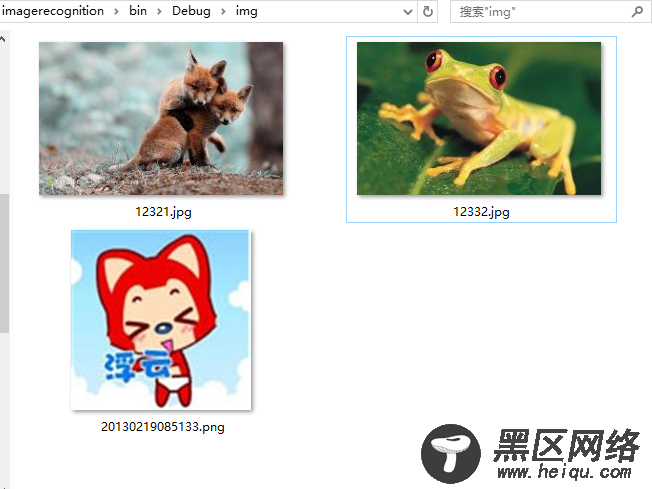class Program { static string dir, modelFile, labelsFile; public static void Main(string[] args) { dir = "tmp"; List<string> files = Directory.GetFiles("img").ToList(); ModelFiles(dir); var graph = new TFGraph(); // 从文件加载序列化的GraphDef var model = File.ReadAllBytes(modelFile); //导入GraphDef graph.Import(model, ""); using (var session = new TFSession(graph)) { var labels = File.ReadAllLines(labelsFile); Console.WriteLine("TensorFlow图像识别 LineZero"); foreach (var file in files) { // Run inference on the image files // For multiple images, session.Run() can be called in a loop (and // concurrently). Alternatively, images can be batched since the model // accepts batches of image data as input. var tensor = CreateTensorFromImageFile(file); var runner = session.GetRunner(); runner.AddInput(graph["input"][0], tensor).Fetch(graph["output"][0]); var output = runner.Run(); // output[0].Value() is a vector containing probabilities of // labels for each image in the "batch". The batch size was 1. // Find the most probably label index. var result = output[0]; var rshape = result.Shape; if (result.NumDims != 2 || rshape[0] != 1) { var shape = ""; foreach (var d in rshape) { shape += $"{d} "; } shape = shape.Trim(); Console.WriteLine($"Error: expected to produce a [1 N] shaped tensor where N is the number of labels, instead it produced one with shape [{shape}]"); Environment.Exit(1); } // You can get the data in two ways, as a multi-dimensional array, or arrays of arrays, // code can be nicer to read with one or the other, pick it based on how you want to process // it bool jagged = true; var bestIdx = 0; float p = 0, best = 0; if (jagged) { var probabilities = ((float[][])result.GetValue(jagged: true))[0]; for (int i = 0; i < probabilities.Length; i++) { if (probabilities[i] > best) { bestIdx = i; best = probabilities[i]; } } } else { var val = (float[,])result.GetValue(jagged: false); // Result is [1,N], flatten array for (int i = 0; i < val.GetLength(1); i++) { if (val[0, i] > best) { bestIdx = i; best = val[0, i]; } } } Console.WriteLine($"{Path.GetFileName(file)} 最佳匹配: [{bestIdx}] {best * 100.0}% 标识为:{labels[bestIdx]}"); } } Console.ReadKey(); } // Convert the image in filename to a Tensor suitable as input to the Inception model. static TFTensor CreateTensorFromImageFile(string file) { var contents = File.ReadAllBytes(file); // DecodeJpeg uses a scalar String-valued tensor as input. var tensor = TFTensor.CreateString(contents); TFGraph graph; TFOutput input, output; // Construct a graph to normalize the image ConstructGraphToNormalizeImage(out graph, out input, out output); // Execute that graph to normalize this one image using (var session = new TFSession(graph)) { var normalized = session.Run( inputs: new[] { input }, inputValues: new[] { tensor }, outputs: new[] { output }); return normalized[0]; } } // The inception model takes as input the image described by a Tensor in a very // specific normalized format (a particular image size, shape of the input tensor, // normalized pixel values etc.). // // This function constructs a graph of TensorFlow operations which takes as // input a JPEG-encoded string and returns a tensor suitable as input to the // inception model. static void ConstructGraphToNormalizeImage(out TFGraph graph, out TFOutput input, out TFOutput output) { // Some constants specific to the pre-trained model at: // https://storage.googleapis.com/download.tensorflow.org/models/inception5h.zip // // - The model was trained after with images scaled to 224x224 pixels. // - The colors, represented as R, G, B in 1-byte each were converted to // float using (value - Mean)/Scale. const int W = 224; const int H = 224; const float Mean = 117; const float Scale = 1; graph = new TFGraph(); input = graph.Placeholder(TFDataType.String); output = graph.Div( x: graph.Sub( x: graph.ResizeBilinear( images: graph.ExpandDims( input: graph.Cast( graph.DecodeJpeg(contents: input, channels: 3), DstT: TFDataType.Float), dim: graph.Const(0, "make_batch")), size: graph.Const(new int[] { W, H }, "size")), y: graph.Const(Mean, "mean")), y: graph.Const(Scale, "scale")); } /// <summary> /// 下载初始Graph和标签 /// </summary> /// <param></param> static void ModelFiles(string dir) { string url = "https://storage.googleapis.com/download.tensorflow.org/models/inception5h.zip"; modelFile = Path.Combine(dir, "tensorflow_inception_graph.pb"); labelsFile = Path.Combine(dir, "imagenet_comp_graph_label_strings.txt"); var zipfile = Path.Combine(dir, "inception5h.zip"); if (File.Exists(modelFile) && File.Exists(labelsFile)) return; Directory.CreateDirectory(dir); var wc = new WebClient(); wc.DownloadFile(url, zipfile); ZipFile.ExtractToDirectory(zipfile, dir); File.Delete(zipfile); } } View Code
这里需要注意的是由于需要下载初始Graph和标签,而且是google的站点,所以得使用一些特殊手段。
最终我随便下载了几张图放到bin\Debug\img

然后运行程序,首先确保bin\Debug\tmp文件夹下有tensorflow_inception_graph.pb及imagenet_comp_graph_label_strings.txt。

人工智能的魅力非常大,本文只是一个入门,复制上面的代码,你没法训练模型等等操作。所以道路还是很远,需一步一步来。

